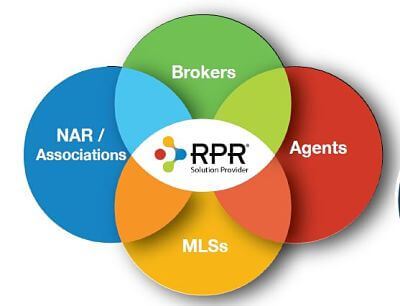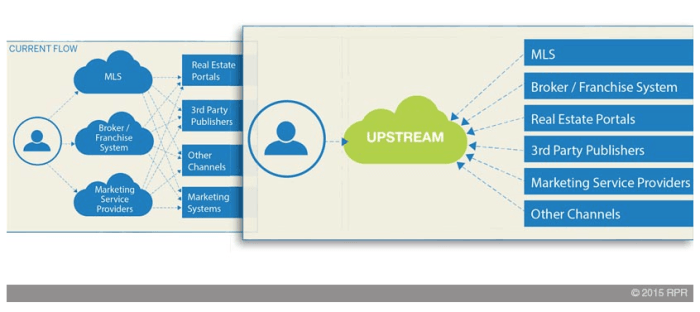You are viewing our site as a Broker, Switch Your View:
Agent | Broker Reset Filters to Default Back to ListUpstream: Our Own Manhattan Project
May 13 2016

In 1939, American intelligence already knew that Nazi Germany had learned the secrets of splitting the atom. By early 1940, still a year before America entered the war, and despite the impact of negative voices, concerns relative to the potential dangers of this research had reached the highest levels of the American government.
Despite what we now understand was common sense, it took advocates an amazing level of energy, time and effort to find someone in the government who was willing to listen to and believe the potential dangers represented by what became known as the "Atomic Threat."
By late 1941, driven by President Roosevelt's passion, America had launched a full effort to understand, design and build the World's first atomic weapon. At the beginning of 1942, these diverse efforts were combined into what became known as the Manhattan Project, one of the greatest administrative innovations in American history.
Because it represented something new and innovative there were, from the very beginning, endless delays and challenges until the Manhattan Project was formally adopted. As is still the case today, projects that represent a step in a new direction are bound to run into interference commensurate with the level of anticipated disruption it is likely to cause. By the time the Manhattan project was completed, over 130,000 workers had been employed and over $260 million 2016 dollars had been expended. But numbers alone do not constitute guarantees.
Even by the time the first device was ready for testing in July of 1945, none of those responsible really knew what was going to happen. On that morning in July of 1945 when the first device was finally set off, literally no one was prepared for the result.
In fact, the blast created a flash that could be seen for over 200 miles. The blast cloud climbed to over 40,000 feet and when the particle mass settled to ground, it created a half-mile wide crater of sand turned into glass. Windows were broken up to 100 miles away.
The intrigue and suspicions surrounding the Manhattan project lasted for decades and still exist in the minds of some. But, regardless of the unintended consequences, the world had entered the atomic age and nothing thereafter would ever be the same. The majority of academicians and historians now agree that the Manhattan project represented an excellent example of democracy coming together to do what had to be done. Most agree that its outcome saved millions of lives.
There is a parallel to the Manhattan Project in real estate. By late 2009, surrounded by the aftermath of the great real estate market meltdown, it became obvious to a significant number of real estate industry leaders, executives and decision makers that the industry, which was returning from the downturn, would never be the same. In the face of a historic level of digital disruption and consumer activism, this group came to the conclusion that without internally fueled innovative disruption, the traditional industry would never regain its previous strength and vitality. This group also came to the conclusion that information and data would be the center point of the disruption.
Like those whose efforts were powered by the Manhattan Project, this group of pioneers, powered by the brokerage community and the National Association of REALTORS®, hit the ground running. Within a year, the idea of REALTORS Property Resource® was born. Work immediately began on a real estate database that would surpass any ever created. This database would spin off data products that would deliver the benefits of the database with the potential to take every real estate professional into the new industry and marketplace environment without additional costs over and above annual dues.

As it turned out, there were a number of unintended yet positive consequences from this project. Many important lessons were learned. One was the importance of creating and controlling a world-class technology research, design and development entity. Today, RPR is a highly respected team, enjoying a "best of breed" status and now stands as one of the crowning achievements of the contemporary real estate industry. It would soon earn its place in the industry's history.
By late 2014, it had become obvious that providing agents with winning data products would not alone save the day for the conventional industry. The industry and marketplace were continuing to experience a wide range of disruptions that went far beyond those anticipated in 2009. The level of discourse and resistance to innovation within the industry was far greater than originally anticipated.
As activism and revolutionary behavior began to arise within the brokerage community, the NAR, RPR and industry teams went back into innovation mode and came up with a new concept. It quickly became clear any solution that would have the potential to save the industry from external digital disruption and the unmet expectations of consumer unrest would have to bring the interests of the whole industry together.
From these efforts came two new programs that are now the focus of the industry's efforts to move forward in the face of continuing external disruption. These are Upstream and AMP.
The Upstream project was conceived and launched by a coalition of brokerages, networks and national franchises representing real estate companies of all sizes and business models. The mission of the Upstream technology is to create a comprehensive data technology platform that will:
- Create a single data entry point and storage platform for real estate-related data
- Standardize data formats between systems
- Manage the distribution of real estate information with a rules-based engine that supports the individual requirements of each participating brokerage

A corporate entity called Upstream RE was formed to hold ownership and management of the system. NAR, RPR and the UpstreamRE, LLC Board executed the License Agreement on October 28, 2015. This agreement, coupled with financing from NAR, signaled the onset of a whole new chapter for the American real estate industry. In early May at the NAR Legislative meetings, five alpha testing teams, consisting of an MLS and a large brokerage, were announced.
As part of this process, work was also continuing on the AMP (Advanced Multi-List Platform) project. AMP's purpose is to leverage RPR's nationwide, parcel-centric database platform to create powerful new technology options for brokers and agents to be offered by MLSs.
With these events, the industry has moved forward into a new chapter of its history. The following points are no longer concepts but now represent its reality.
- Our industry continues to face severe threats and challenges from a wide range of forces, including digital disruption and consumer unrest. Something had to change and something had to move the industry forward.
- The most innovative, distinguished and powerful team ever assembled by this industry has spent the past two years in the Upstream and AMP development process.
- No other industry effort of similar status or expertise has either been proposed or has emerged. In fact, in some cases, quite the opposite has occurred.
- Both Upstream and AMP are now realities and have been transfused into the industry's bloodstream at the very highest levels. As is the nature of historic developments, no one can truly know the ultimate impact of either. But such cannot be the test of success. Both are here to stay.
- Neither Upstream nor AMP constitute militaristic dictates. In fact, just the opposite is true. Both were developed with a perspective that anticipates continuing innovation, creativity and transformation. There is room for everyone on this bus.
- As was the case with the Manhattan Project, now is the time for the entire industry to surrender its dissident weapons, roll up its collective sleeves and see that these projects are implemented, installed and operated for the benefit of the entire industry and in the spirit with which they were created.
- This is the rational course of the industry moving forward!
To view the original article, visit the RECON Intelligence Services blog.









